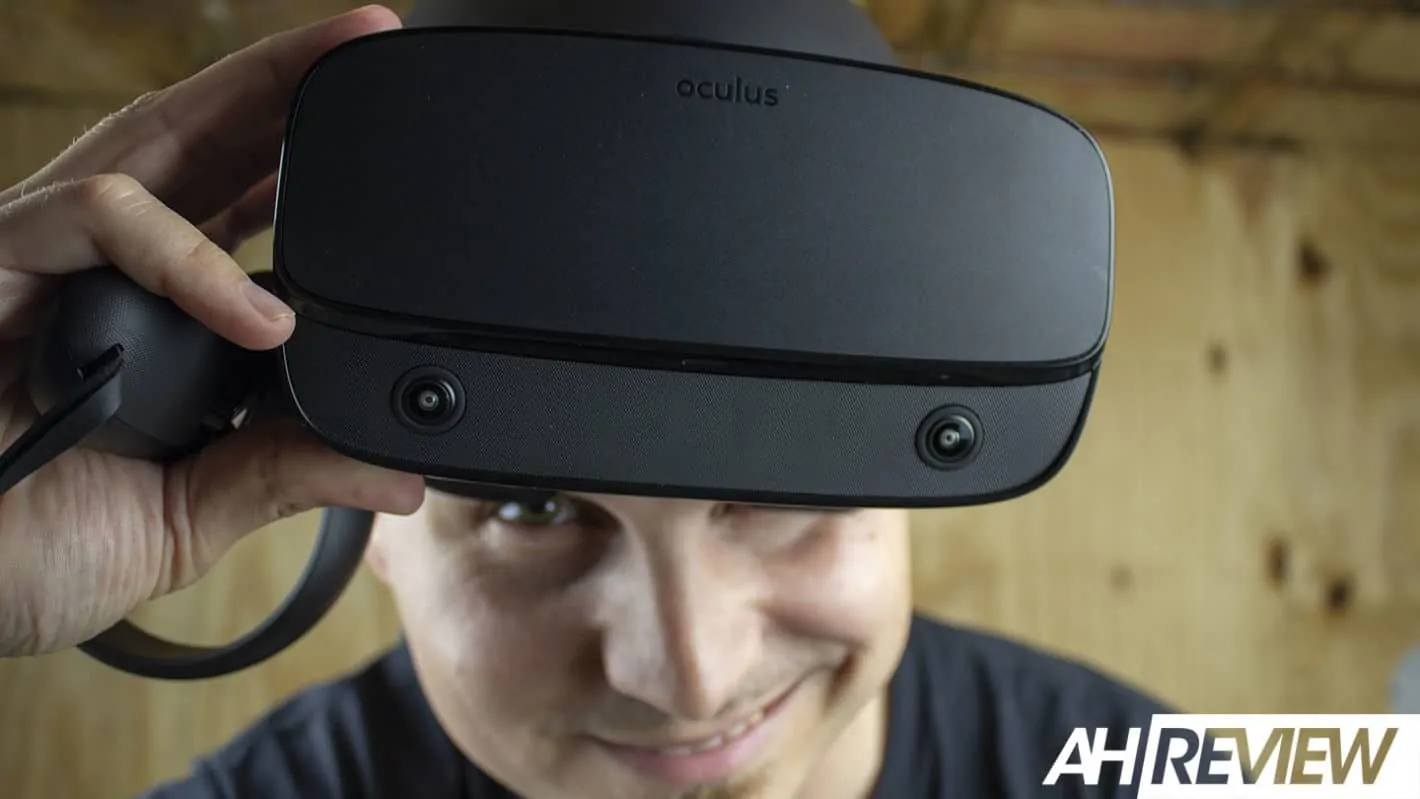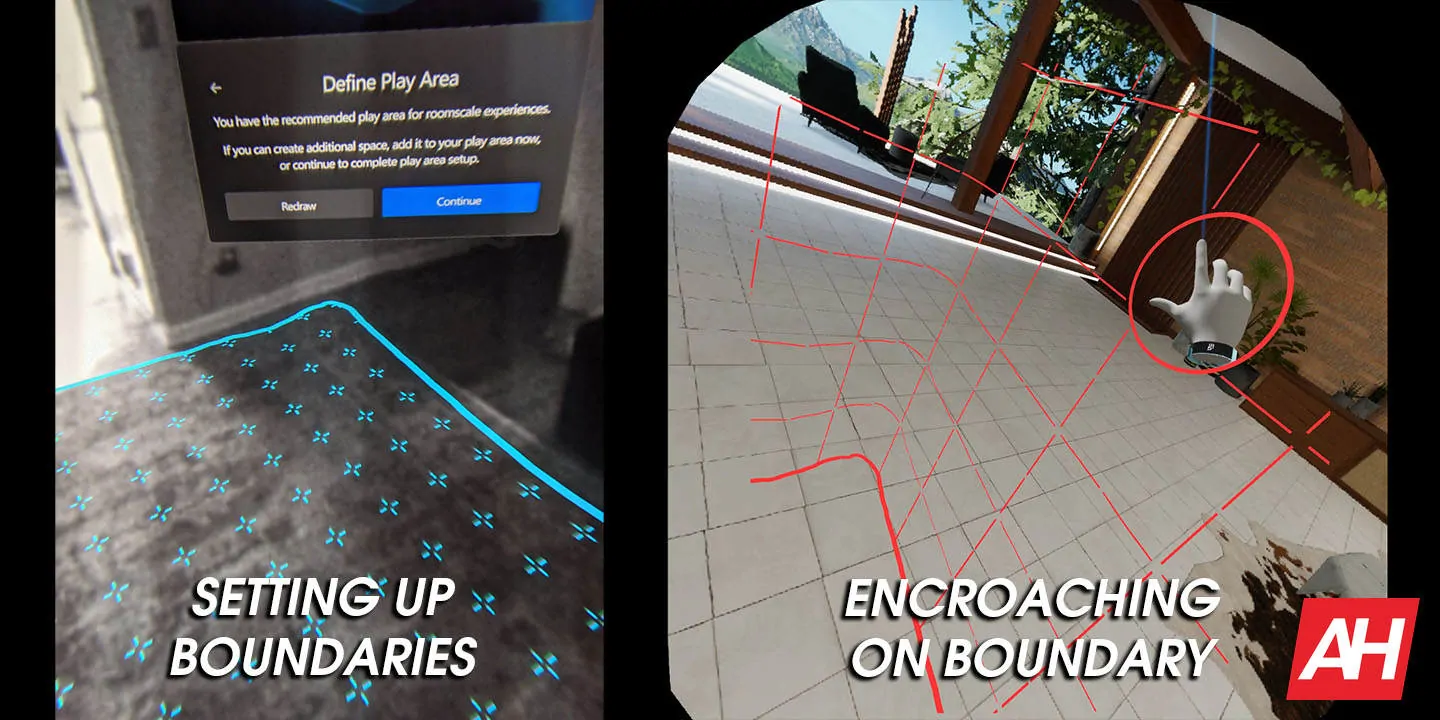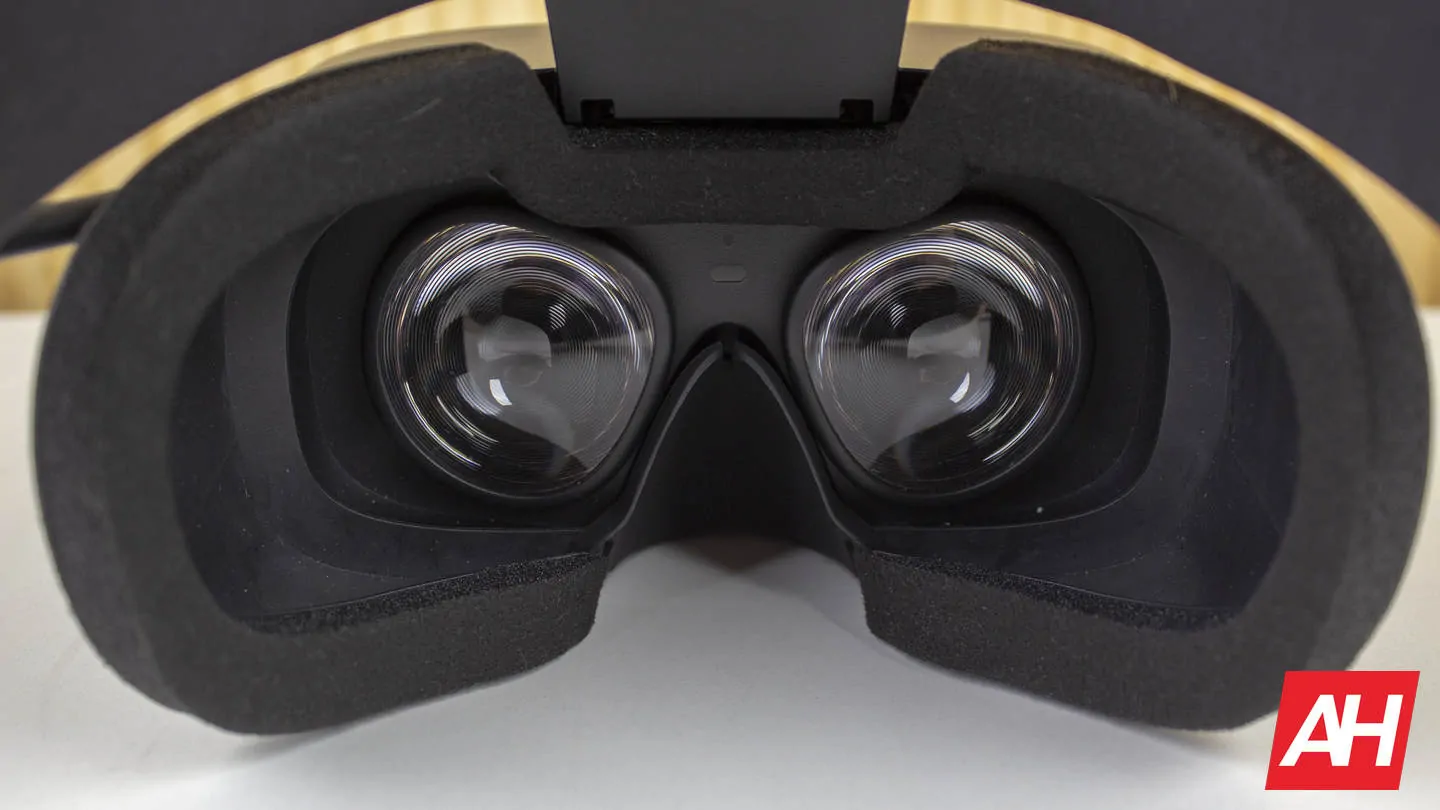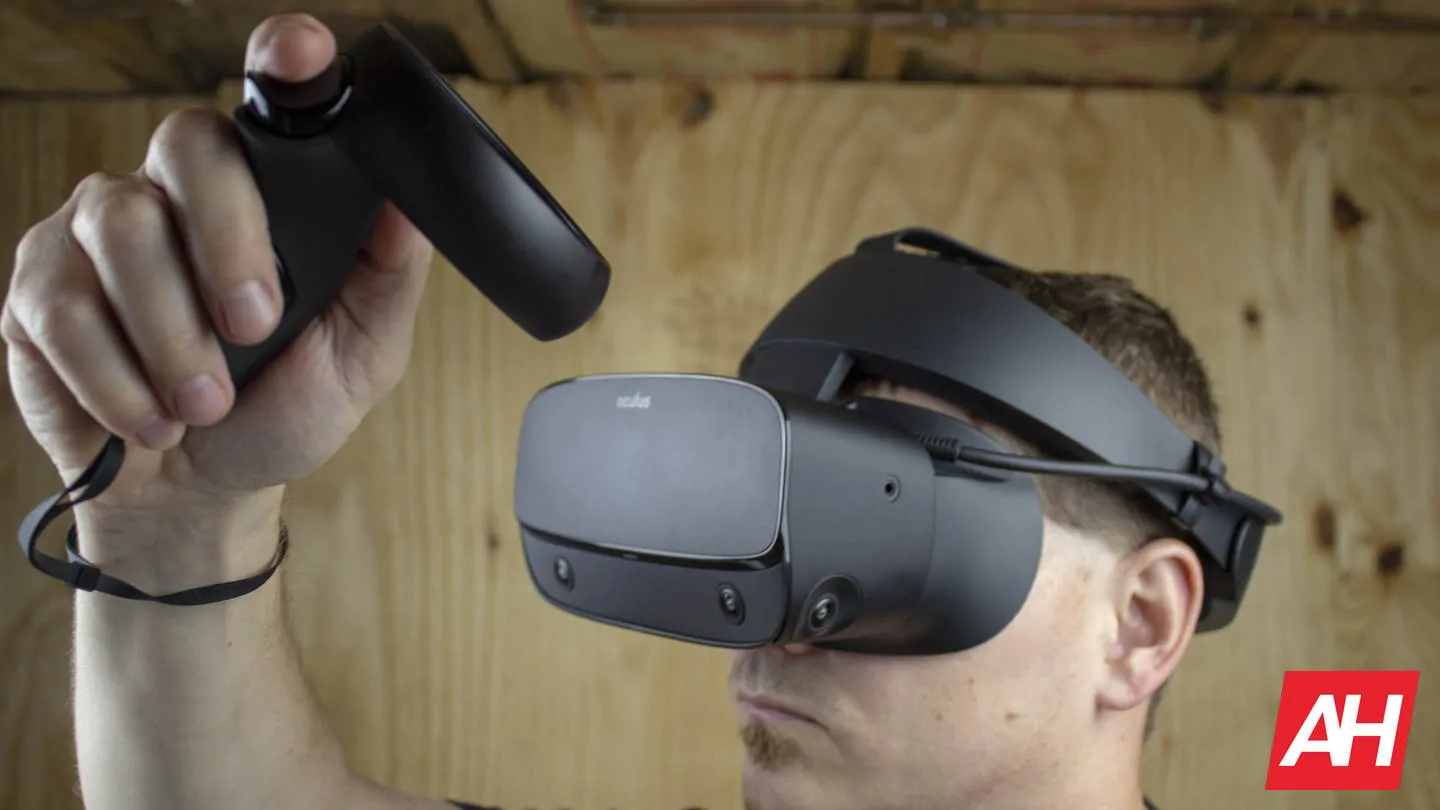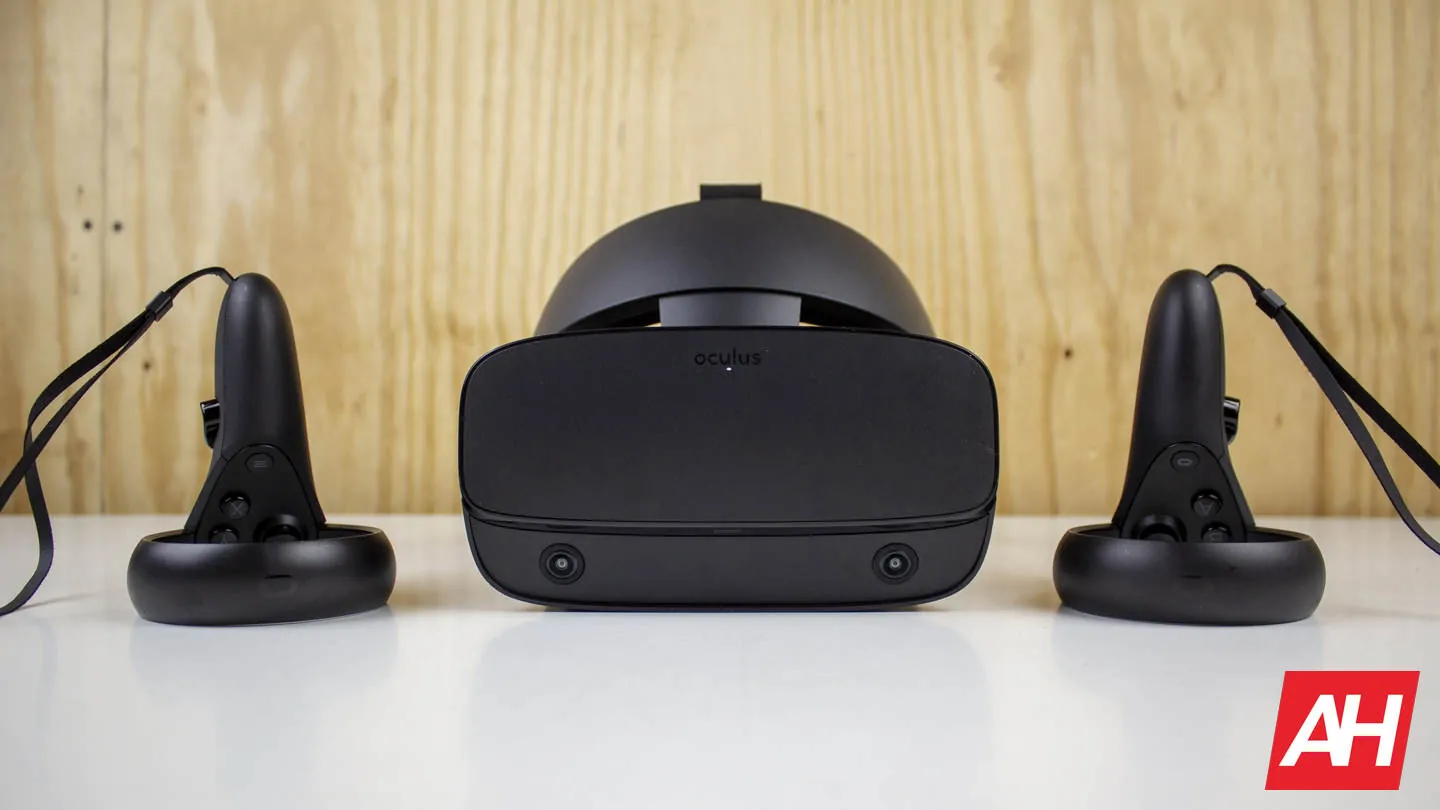So what would make someone want to buy the Oculus Rift S over every other VR HMD (head-mounted display) on the market? The key factor is in the ease of use.
The “S” in the name “Oculus Rift S” seems a bit out of place at first. Typically used to denote a “super” version of a product, the Oculus Rift S is, instead, a wildly different headset than the original Oculus Rift CV1 that launched in 2016. But, despite being a completely different headset in every single possible way it is, ultimately, a better headset at the end of the day.
Perhaps the S stands for “super easy setup” because this is easily the most simple setup you’ll find on any HMD on the market. Two cables connect to your PC: A DisplayPort plug (not HDMI, be careful), and a single USB 3.0 plug. The controllers are tracked entirely using the brand-new Oculus Insight inside-out tracking method, which means the 5 cameras located on the headset itself are all that’s needed for proper roomscale tracking.
That’s a huge departure from the overly complicated setup of the original Oculus Rift, especially if you wanted a proper roomscale experience. Aside from the physical connections, the setup within the Oculus software is extremely easy too. Once the software is installed on your computer, everything else can be done from within the headset.
You’ll set up the Guardian boundaries from within the Oculus Home screen by drawing a line around the perimeter of your room with your controller. Since you’re in the headset, this feels completely natural, and the headset can even store several different room configurations at a time, too. Since the visual map data of the room is stored locally on your machine and remembered for later use, you won’t normally have to adjust or redraw these lines even through computer reboots or when unplugging the headset.
It’s this ease of setup that’s probably the single best reason to get an Oculus Rift S over any other PC-powered VR HMD.
This feels like magic at first and is only broken when having to deal with SteamVR, where I found myself having to go through the initial room setup in SteamVR more times than I would have liked over the past 3 months. I also had several issues with audio routing, the occasional lag, and several other regular problems while using SteamVR as well. I found these things to be common on the HTC Vive when it first launched but they were cleared up over time. Hopefully, that happens with the Oculus Rift S too.
If you’re just using the Oculus Home software, though, you’re almost never going to have to do this more than once. In fact, this is probably the most console-like experience you’ll get when it comes to PC VR, which is often overly complicated to set up and maintain.
The Oculus software will save a visual layout of your room and remember it, with the ability to remember several rooms at a time. While initial fears might have some wondering about how this data is stored, Facebook has shown that it’s only accessible locally and is never uploaded to the cloud.
Controller tracking was also incredibly impressive, even when compared to SteamVR’s millimeter-accurate lighthouse tracking technology. After the big tracking update in July, I had almost no issues with tracking in any type of game at all. In some games, like Audica, I would find that the tracking would momentarily be lost when crossing controllers or placing them one in front of the other; a necessary mechanic in a game that requires you to multitask two guns and shoot multiple targets to the beat of a song.
Even still, this tracking loss was only noticeable because there was a very slight glitch in the motion of the controller but never resulted in a loss of playability. Even games like Beat Saber or Apex Construct didn’t flounder when putting my arms over my head or behind my back, as the tracking also utilizes the many gyros and sensors in the controllers to estimate the relative position.
The shape and size of the Oculus Touch controllers is superior to that of the HTC Vive’s wands in every way and even surpasses the Valve Index’s in some ways, too. The biggest advantage here is in games like Beat Saber, which requires quick movements and is far easier to play without the bulk or size of other controllers. It’s simply a joy to use these controllers in these types of games for the most part, but more on the negatives later.
When compared to the HTC Vive’s trackpad and lack of buttons, I definitely prefer the Oculus Touch’s traditional joysticks and buttons for input. It just works better for most games and, with the added capacitive sensors on all the buttons and joysticks, helps with hand presence in VR. Even touching the buttons without pressing them will register in VR and show hand movement, making it feel more like your hand is actually there.
It’s not Valve Index levels of interactivity, but it’s a happy medium given the size difference between those controllers and these ones.
Oculus and many other OEMs are moving from OLED to LCD on this latest generation of headsets for one major reason: pixel density. The original Oculus Rift launched with an OLED panel running at 2160×1200 resolution, while the Rift S features a modestly improved resolution LCD panel running at 2560×1440 resolution. That’s a 30% increase in resolution alone, but those numbers don’t tell the real story. To find that, you’ll have to venture much deeper than the pixels themselves and look at the sub-pixels, instead.
Like all PenTile displays, the display on the original Oculus Rift made the resolution effectively 30% lower than it actually was. Without going into the reasons why PenTile exists, know that the diamond pattern of sub-pixels created by PenTile configurations makes that sub-pixel count lower and, thus, makes the display look fuzzier when you look closely at it. This is, obviously, a problem in VR because the display is literally on your face.
The difference in clarity between the two panels is simply jaw-dropping. From the moment you put it on you’ll realize that you can actually read text and see things further away than a few feet without severe distortion and moire effect.
As of right now, this clarity measurement is the most important metric in VR since other major display issues have been solved.
Some Less-than-ideal Designs
Looking back at my first impressions tells me almost everything I need to know. At first, my main complaints were the lack of built-in headphones, the terrible black levels on the LCD display, and the annoying battery compartment design of the controller. Over the past 3 months, my opinion on these issues hasn’t changed one bit. These are easily the worst parts of the Rift S experience and they didn’t subside one bit during those many days and through the many updates and fixes the Rift S has seen since launch.
The biggest hassle of the issues has to be the lack of built-in headphones. At its launch in 2016, one of the only advantages of the Oculus Rift, when compared to the HTC Vive, was the headstrap design. This headstrap was both more comfortable than the Vive’s and featured high-quality built-in headphones. HTC even followed up with a “deluxe audio strap” about a year after the Vive’s original launch to match the Rift’s design.
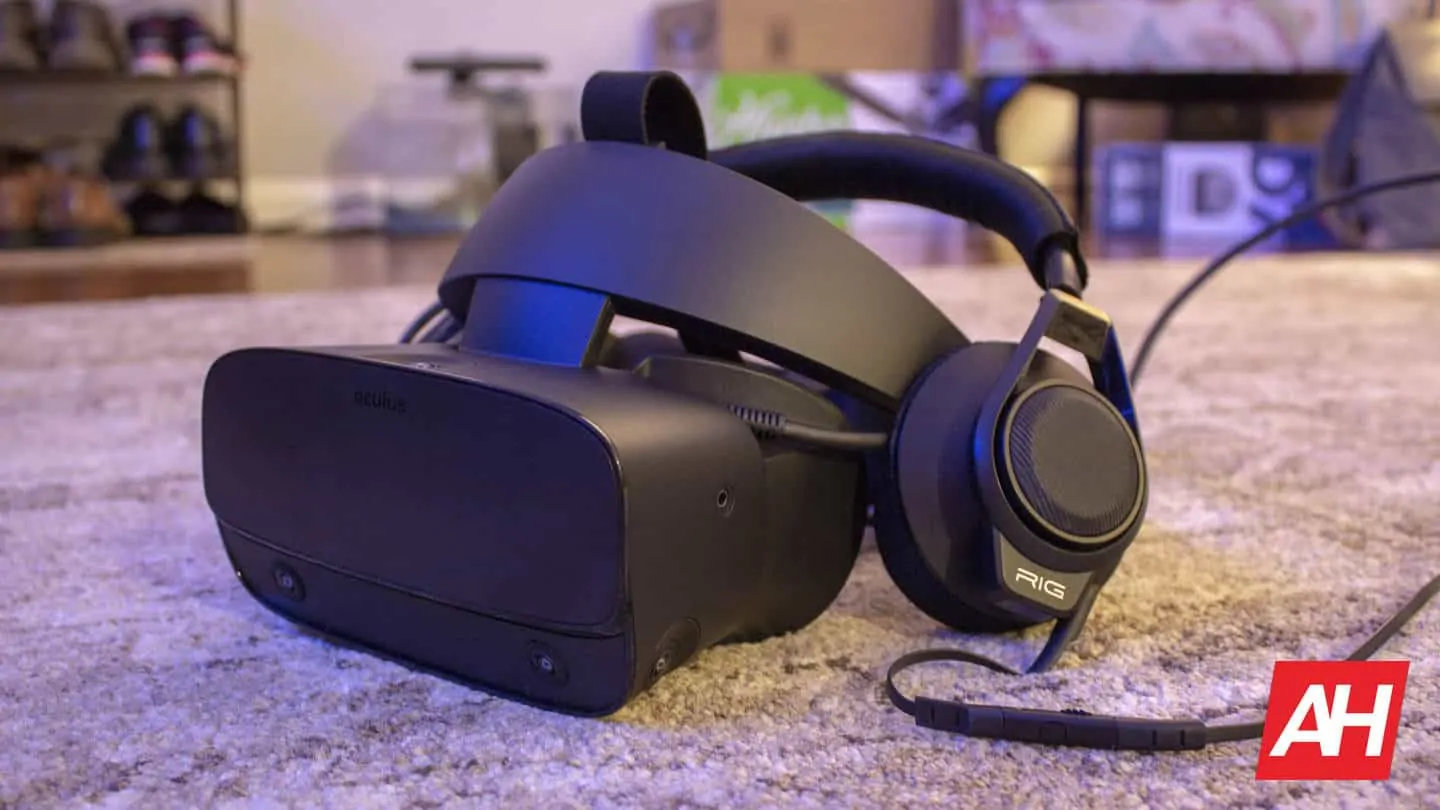
So why in the world would Oculus greenlight a design without this key feature? The worst part is the fact that the headstrap isn’t interchangeable, which means owners of the current design won’t ever see this changed and will always have to rely on their own headphones to complete the experience. That last part is really the crux of the problem; it’s an incomplete experience without those headphones.
Now that doesn’t mean there’s no audio coming from the headset without headphones. The Halo strap, as it’s called, wraps around the head and provides sound via small speakers built into the strap. These aren’t particularly good speakers by any measure, and they’re not particularly loud either, so you’re not going to want to use these long-term. I flat out refused to play games like Beat Saber with just these speakers as they simply sound bad.
Simply put, if you buy an Oculus Rift S, get a pair of comfortable headphones that plug into the HMD’s 3.5mm audio jack on the side.
The only advantage I could see coming from this design is to provide less surface area that touches skin, making the experience just a bit less gross when sharing an HMD with someone. Even then, the pads that adorn the sides and touch your face are also not interchangeable and will get very sweaty with use, leaving little room to think this is somehow a more hygienic experience.
I also can’t figure out what Oculus was thinking when they designed the battery compartment on these controllers. Each controller is powered by a single AA battery, which lends just a tad bit of mass to the otherwise featherweight controllers. The compartment that seals the battery in, unfortunately, doesn’t seal at all. It’s magnetically clasped but isn’t a strong magnet by any means, and most refrigerator magnets would probably hold more weight.
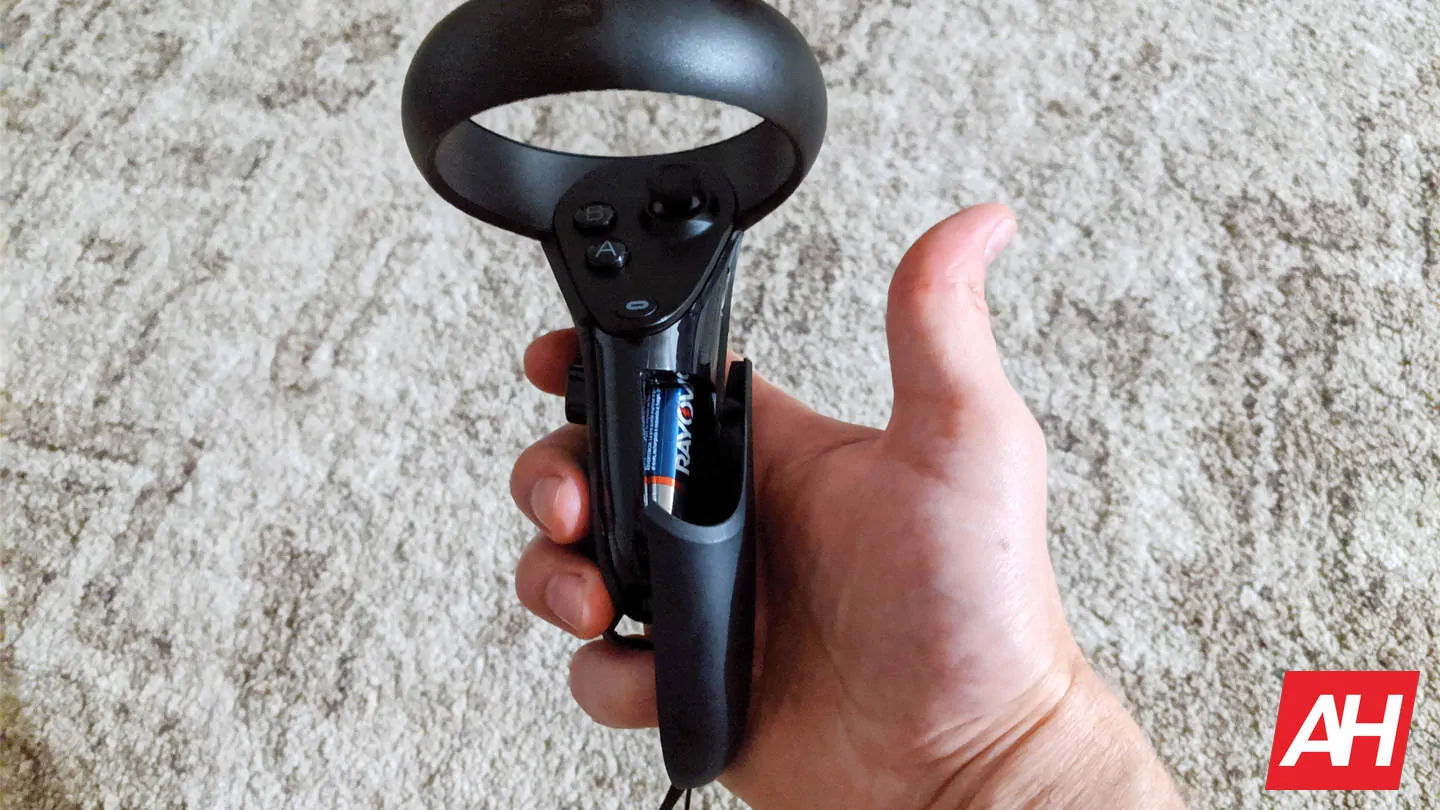
Because of this, it’s incredibly easy to have the controller fly out of your hand when playing something intense like Beat Saber or Until You Fall. More than once I had the controller leave my hand only to find that I was still holding the battery compartment itself. This thing needs a locking tab or, better yet, a small screw that will hold the thing in place. If you forget or refuse to use the built-in wrist straps, these things are flat-out dangerous in close proximity to anything.
I also felt like using AA batteries was an interesting choice in 2019. With fast-charging technology like we’ve never had in consumer electronics, I thought it was odd that Oculus would choose AA batteries to replace a quality, built-in rechargeable battery. It would also solve the issue with the battery compartment and help reduce environmental waste because let’s face it, most consumers probably don’t use rechargeable AA batteries.
Trying To See Past the Grey
Last and probably the least of my gripes is the display itself. This new type of fast-switch LCD panel solves the issue of pixel persistence (the time it takes each pixel to change colors, essentially) that plagued LCDs for decades. That eliminates the nasty ghosting that LCDs used to have but unfortunately doesn’t solve the terrible contrast ratio that LCDs suffer from.
It’s this contrast ratio that’s the biggest problem and one you certainly won’t forget in some games. Playing Vader Immoral Episode I on the Rift S was almost laughable. Yes, it’s crystal clear and looks wonderfully detailed, but it was difficult to appreciate all this enhanced detail with the giant wall of grey in front of everything. Vader Immortal Episode I is a dark game and, as such, a display with a low contrast ratio is going to look grey most of the time instead of black.
Things in the shadows will be difficult to make out and, ultimately, makes for a worse experience in some types of games.
Thankfully, this experience wasn’t present in most games, as many VR titles are bright and colorful. It’s ironic that the additional detail provided by the resolution can be so masked by the loss of contrast detail from the underlying technology but, ultimately, this was the best decision at this juncture in time.
It’s not just the resolution or pixel density that improves the clarity though, it’s also the next-generation lenses inside. Unlike first-generation consumer VR HMDs, these new lenses are crystal clear and don’t feature the nasty circular rings or God-rays as we saw from those lenses. They’ve also got a much better sweet spot for clarity and don’t require as much fiddling around to find the clearest part of the lens.
The Oculus Rift S doesn’t have physical IPD (interpupillary distance, the distance between your pupils) adjustment but, thankfully, does feature digital IPD adjustment. Instead of the lenses physically moving closer together or further apart, the entire set of visible pixels is shifted across the display panels to provide a way for a wide range of people to more comfortably experience VR.
The biggest downside of not providing physical adjustment is the lack of a physical knob to adjust the IPD. As a result, I found myself forgetting to adjust the IPD between rounds of my wife and son playing and, as a result, would find my eyes straining more than needed. As it is, IPD adjustment is buried in settings and takes too long to adjust for my liking.
A new strap design, but still not wireless
The new strap design is called the Halo, and that’s a direct result of its shape. The circular strap wraps around the back of the head and is adjusted by a knob at the back and held in place by the strap up top. It was odd to me, at first, that the knob didn’t lock in place as it does on the HTC Vive’s Deluxe Audio Strap. Instead, the strap is loose and free moving, with the knob acting more like a precision adjustment for the size.
That strap up top is what locks the headset size into place and, ultimately, makes for a less comfortable fit for some people. I didn’t have any issues with using it in most games, but I had it fly off my head once or twice while quickly lifting my head up or standing up too quickly.
My son, who has a much smaller head, also hated it and regularly asked to use our HTC Vive while playing VR titles, instead.
The worst part of this decision is that the strap isn’t interchangeable. What you see is what you get, and if it doesn’t work for you, it’s never going to work for you.
It’s also not wireless, and there’s no option for a wireless accessory since the strap or cable can’t be taken off the HMD. Going back to a wired VR experience after using the HTC Vive or Oculus Quest was difficult and, ultimately, a less ideal design.
I also was a bit nervous with how the cables connect to the computer; directly into a single USB port and the DisplayPort of my graphics card. While it’s not likely that I’ll tug on this cord while playing, the possibility is there and makes me a little uneasy. HTC provides a “break-out box” for this reason, which connects to the computer and provides a tertiary way to prevent cable tugging while playing.
The pads themselves were comfortable but don’t have the capacity to absorb sweat the way some other HMDs do. I found that the pads would become rather drenched in a shorter amount of time than other HMDs. These pads are also not interchangeable and can’t be simply swapped out for fresh ones as other HMDs can.
Conclusion
There are plenty of reasons to love the Oculus Rift S. It’s got a crystal-clear display, light and comfortable controllers, the excellent Oculus ecosystem and all that entails, and a setup that’s far less complicated than previous generations. Despite not having any external cameras or sensors, the movement tracking of the Rift S just works and, at times, feels utterly magical.
But these many steps forward that Oculus has taken with the Rift S’s aren’t without their steps back. The contrast ratio of the display makes darker games very difficult to see, and the lack of wireless support means the Quest is ultimately the better decision if you want a wireless Oculus headset. The Halo headstrap design is simply not going to work for everyone, and not being able to change out the sweaty foam pads means this headset isn’t ideal for sharing. The lack of built-in headphones is also a huge deterring factor, as you’ll need to add some headphones to get a truly good audio experience.
But at $399, there’s little in the way of calling this one of the best value HMDs you can get on the PC. While the contrast ratio leaves a lot to be desired, the added clarity of this new display panel is simply stunning. While the battery compartment design on the controllers is flat-out terrible, the ease of setup and accuracy of tracking make this a breeze to use.
Folks looking for the content larger library of PC VR and ability to take advantage of their beefy gaming PC can rest assured that this is a good experience, even if it isn’t the best one.
The Valve Index offers a much better overall experience but is a lot more expensive and requires third-party software in order to play Oculus-exclusive games. Likewise, the HTC Vive offers a wireless option but costs more and doesn’t have the crystal clear display or native Oculus functionality, either. Everything else is simply not in the same playing field as these three options.
Oculus Rift S - Amazon
